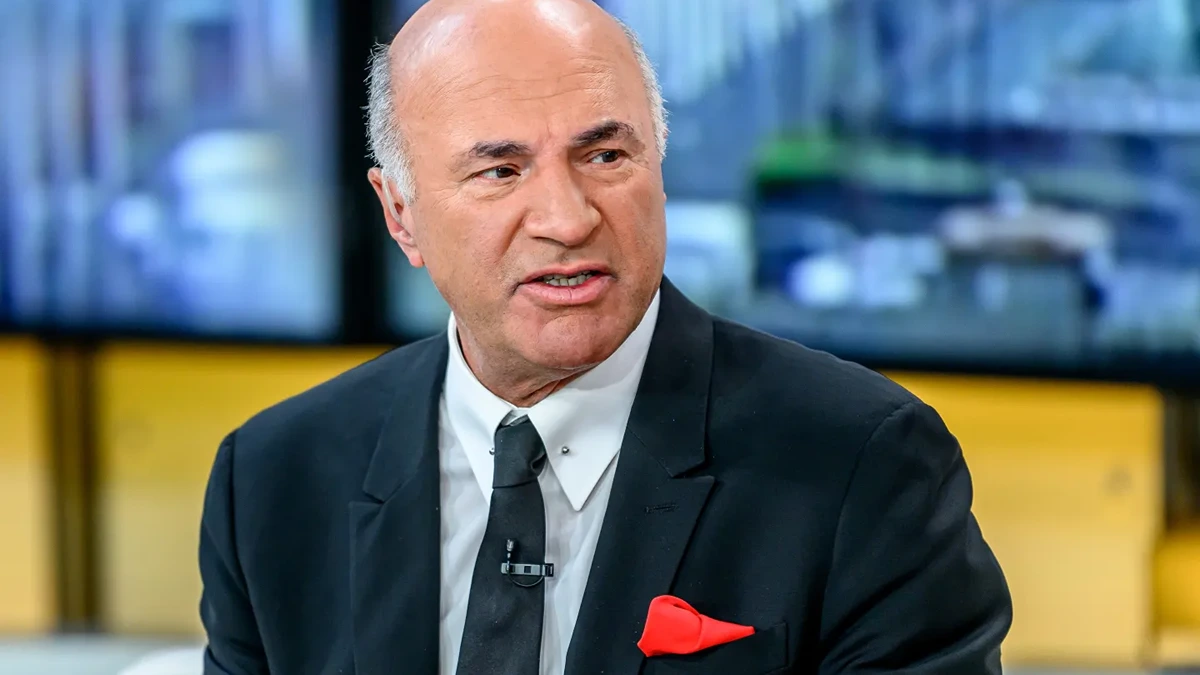
When one thinks of “Mr. Wonderful,” the hard-nosed investor persona of Kevin O’Leary often comes to mind — and yet, behind that image lies a deeply personal and enduring investment lesson, taught not by a Wall Street titan, but by his mother, Georgette O’Leary.
What makes the story remarkable is that she quietly, almost invisibly, built a lifelong portfolio over 55 years — one that O’Leary says outperformed most hedge funds. It was only after her passing that he discovered the full extent of her success, and it changed how he invests for good.
The Hidden Journey: A Working-Mother’s Portfolio
Georgette O’Leary wasn’t a professional money manager. According to Kevin’s recounting, she worked in accounting and later for small business operations, earning wages modest by today’s standards. Yet, what she did next was quietly extraordinary. For decades, she invested methodically, consistently, and with discipline.
Kevin revealed that his mother deposited roughly 10% to 20% of her paycheck into two asset classes: large-cap dividend-paying stocks and telco/corporate bonds. She did so weekly, withholding little in the way of glamor, simply reinvesting or holding the principal and living off the yield. One interview quote, “She would take 20% of her paycheck each week, allocating it to two asset classes. The stocks that paid dividends, large-cap stocks and telco bonds.”
What’s more, she intentionally kept no more than 5% of her portfolio in any one stock or bond, and no more than 20% in any one sector. When allocations drifted beyond that threshold, she trimmed the positions.
And for more than five decades, she stuck with it, rarely touching the principal — using only the dividends or interest for spending. The result, as Kevin O’Leary puts it: “The performance was extraordinary. It was beyond any hedge fund guy or anything.”
The Moment of Revelation
The folder came to light only after his mother’s death. O’Leary, executor of her estate, discovered what she had built in secret — unknown even to her husbands. The revelation: a well-balanced portfolio, built over 55 years, quietly compounding and delivering yield. While most investors and fund managers chase complicated strategies.
When he realized the magnitude of what she’d achieved, O’Leary said he made a decision that he was going to invest in the same way as his mother.
What Were Her Rules? What Can We Learn?
From O’Leary’s description, several simple but powerful rules emerge:
- Consistency: Investing a proper portion of income, which means 10-20% over decades.
- Simplicity: Focus on primary asset classes, including the dividend-paying stocks plus the high-quality bonds.
- Let the Principal Ride: She rarely, if ever, touched the principal—only lived off yield.
- Patience: Time was her ally; she held for decades, embracing compounding.
O’Leary emphasizes that none of this was rocket science—they’re basic principles, but followed with precision.
Why Was Her Portfolio So Successful?
There are several reasons why her approach delivered such outsized results, and why O’Leary believes it trumped many hedge fund performances:
- Yield and Reinvestment: By focusing on dividend stocks and bonds, she generated income, which could either be spent or reinvested — leveraging compounding returns over 55 years.
- Avoiding Speculation: Instead of chasing trendy ideas or ongoing sectors, she remains stuck with the large-cap stocks.
- Relentless Diversification: She limited the exposure to any particular stock or industry. Her portfolio of stocks avoided concentration risk or any damage a small mistake might cause.
- Low-maintenance, High‐effectiveness: Her strategy didn’t rely on timing or extensive trading; the ease of execution meant fewer errors and lower costs.
For O’Leary, these were not just lessons—they were “investing truths” he realized he’d been overlooking or under-appreciating in his career until his mother’s example.
How Kevin O’Leary Adapted the Strategy
Having seen the blueprint of his mother’s success, O’Leary didn’t simply copy it. Instead, he adapted it to his own investing universe.
He acknowledges that he still applies similar disciplines: dividend-oriented stocks, asset allocation, diversification, and limiting concentration. But his adaptation adds real estate (about one-third of his portfolio) and other asset classes, given his scale and resources.
In his words, he concluded:
“Rather than trying to time the market, embrace the long game. Build a yield-rich, diversified portfolio and let the compounding do its work.”
He also urges investors to ask:
- Are you being disciplined with contributions?
- Are you avoiding too much concentration?
- Are you living off yield or eroding principal?
- Are you thinking decades ahead, not just months ahead?
The Bigger Takeaways for Investors
What can everyday investors learn from this story of a working-class mother whose quiet portfolio outperformed hedge funds? Several lessons stand out:
- Start early and stick with it: Time is your greatest advantage. Georgette started decades ago; every year added compounding.
- Automate contributions: Even modest amounts were constantly invested.
- Focus on cash flow: Dividends and interest matter; they generate returns even while you sleep.
- Mind concentration risk: One bad choice of stock can bring down a lifetime of progress.
- Let time do the heavy lifting: Markets are volatile; strategies that rely on market timing or speculation often underperform.
O’Leary often says that if you do these things, you stand a far better chance of beating the average investor—and potentially side-step many of the pitfalls hedge funds face.
Why This Story Resonates
Why has this anecdote from Kevin O’Leary’s life captured so much attention? Because it flips a common assumption: that outsized returns require complexity or insider access. Here are some reasons people connect with it:
- Every day origins: A mom, working man or woman, quietly building wealth—rather than a hedge fund manager taking huge risks.
- Counter-intuitive: Many investors chase the next big trend, but here the success came from modest, steady investing over decades.
- Relatability: Many people feel overwhelmed by investing; this story gives hope that consistency matters more than genius.
- Authority: O’Leary is known for being blunt and business-savvy; his acknowledgment that his mother “beat hedge funds” adds weight to the lesson.
- Emotional backbone: Beyond numbers, there is the story of legacy, independence, and empowerment—a woman quietly investing and leaving a financial legacy.
How to Start Implementing This Yourself
If you’re inspired by this story and want to emulate it, here’s a suggested action plan:
- Decide on a contribution rate: Pick a percentage of income (for example, 10-20%) and automate investing.
- Choose a simple asset mix: Consider large-cap dividend stocks + high-quality bonds as a start. Diversify across sectors and individual holdings.
- Set concentration limits: For example: no more than 5% of the portfolio in any one stock or bond; no more than 20% in any one sector.
- Live off yield, if possible: Try to reinvest dividends/interest or use them for non-essential spending rather than dipping into principal.
- Review but don’t over-trade: Rebalance when allocations drift beyond your limits, but avoid frequent speculation.
- Think long-term: Give the portfolio time to compound; don’t chase short-term performance.
Conclusion
When Kevin O’Leary discovered his mother’s hidden investment legacy, he didn’t just find a surprise inheritance — he found a blueprint. Her disciplined, long-term approach reminded him that wealth accumulation need not be complicated; it needs to be consistent, diversified, yield-focused, and above all, patient.





















